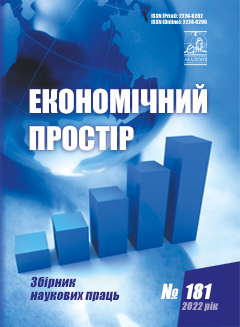TRANSNATIONALIZATION AS A REGULATOR OF THE INTERNATIONAL TECHNICAL DIVISION OF LABOR IN AN ENVIRONMENT OF TRANSBORDER MOVEMENT OF PATENTS AND LICENSES
Abstract
The fundamental processes of technoglobalism have opened wide opportunities for the inclusion of states and regions in the international technological division of labor and cross-border movement of patents and licenses. It is well known that an important indicator of its intensity is the valuable volume of royalties and other license deductions received by economic entities of various countries for the use of their intellectual property objects under license agreements in the field of industrial property, copyright and related rights, the use of databases, programs for electronic computing machines, etc. In the complex characteristics of the international license exchange, it is also important to note that the expansion of the innovative leadership of states with an active balance of technological balance, in addition to export channels, also occurs through the large-scale import of scientific and technical knowledge generated by other states and regions. The acquisition by developing countries and states with newly created markets of the status of active participants in the cross-border movement of patents and licenses in the near future will significantly transform its currently prevailing center-periphery model towards the development of a polycentric model. It will be characterized by a dynamic redistribution of quantitative and structural parameters of international scientific and technological exchange in favor of new centers of global technological rivalry, an increase in the level of systematicity in their mastery of Industry 4.0 technologies, and the formation of new local points of accumulation of global intellectual capital. Therefore, the key vector megatrends of the further development of international technology transfer will acquire clearly expressed dualistic properties, when against the background of a certain leveling of the quantitative and qualitative parameters of innovative development of states and regions, there will be a simultaneous deepening of the technological asymmetry between the leaders of global innovative progress and the rest of the world.
References
World Development Indicators: Science and Technology. The World Bank, 2021. URL: http://wdi.worldbank.org
Патентная статистика как показатель развития производственной сферы в Украине. URL: https://www.inventa.ua/images/pdf/patentnaja-statistika-kak-pokazatel-razvitija-proizvodstvennoj-sfery-v-ukraine.PDF
Гаврилюк Р. П. Історичний контекст становлення та розбудови національної системи міжнародного трансферу технологій Японії.. 2012. №1. С. 52-61.
Кириченко Э. Контроль США над международными каналами трансферта технологий: вызовы, механизмы, тенденции. Мировая экономика и международные отношения. 2021. Том 65. №7. С. 89-97.
Столярчук Я. М. Глобальні асиметрії економічного розвитку: монографія. К.: КНЕУ, 2009.
Van Ark B. Measuring the New Economy: An International Comparative Perspective. Review of Income and Wealth. International Association for Research in Income and Wealth. March 2002. Vol. 48 (1). Р. 1-14.
Глобальний ринок інтелектуальної власності: масштаби, структура, інститути: монографія / Я. М. Столярчук, О. М. Галенко, О. Ю. Біленький, В. М. Столярчук. К.: КНЕУ, 2016.
World Development Indicators: Science and Technology. The World Bank, 2021. URL: http://wdi.worldbank.org
Patentnaia statystyka kak pokazatel razvytyia proyzvodstvennoi sferi v Ukrayne. [Patent statistics as an indicator of the development of the production sphere in Ukraine]. URL: https://www.inventa.ua/images/pdf/patentnaja-statistika-kak-pokazatel-razvitija-proizvodstvennoj-sfery-v-ukraine.PDF
Gavrilyuk R.P. (2012) Istorychnyj kontekst stanovlennja ta rozbudovy nacionaljnoji systemy mizhnarodnogho transferu tekhnologhij Japoniji. [Historical context of formation and development of Japan's national system of international technology transfer]. Stratehiia rozvytku Ukrainy: Ekonomika, sotsiolohiia, pravo, no. 1, pp. 52-61.
Kirichenko E. (2021) Kontrolj SShA nad mezhdunarodnimy kanalamy transferta tekhnologhyj: vizovi, mekhanyzmi, tendencyy. [US control over international technology transfer channels: challenges, mechanisms, trends]. Myrovaia ekonomyka y mezhdunarodnie otnoshenyia, vol. 65, no. 7, pp. 89-97.
. Stolyarchuk Ya. M. (2009) Ghlobaljni asymetriji ekonomichnogho rozvytku: monoghrafija. [Global asymmetries of economic development: monograph]. Kyiv. KNEU. (in Ukrainian).
Van Ark B. Measuring the New Economy: An International Comparative Perspective. Review of Income and Wealth. International Association for Research in Income and Wealth. March 2002. Vol. 48 (1). Р. 1-14.
. Stolyarchuk Ya., Galenko O., Bilenky O., Stolyarchuk V. (2016) Ghlobaljnyj rynok intelektualjnoji vlasnosti: masshtaby, struktura, instytuty: monoghrafija [Global market of intellectual property: scope, structure, institutions: monograph]. Kyiv. KNEU. (in Ukrainian).



